Aave is one of the few defi protocols that has proven itself throughout the years. The market went up and down, but the protocol kept on going. The TVL even under these bad conditions is still in the billions. No hacks and failures on the platform up to date.
It is now by far the number one borrow and lending protocol. Borrowing and lending for the new defi age.
Let’s take a look.
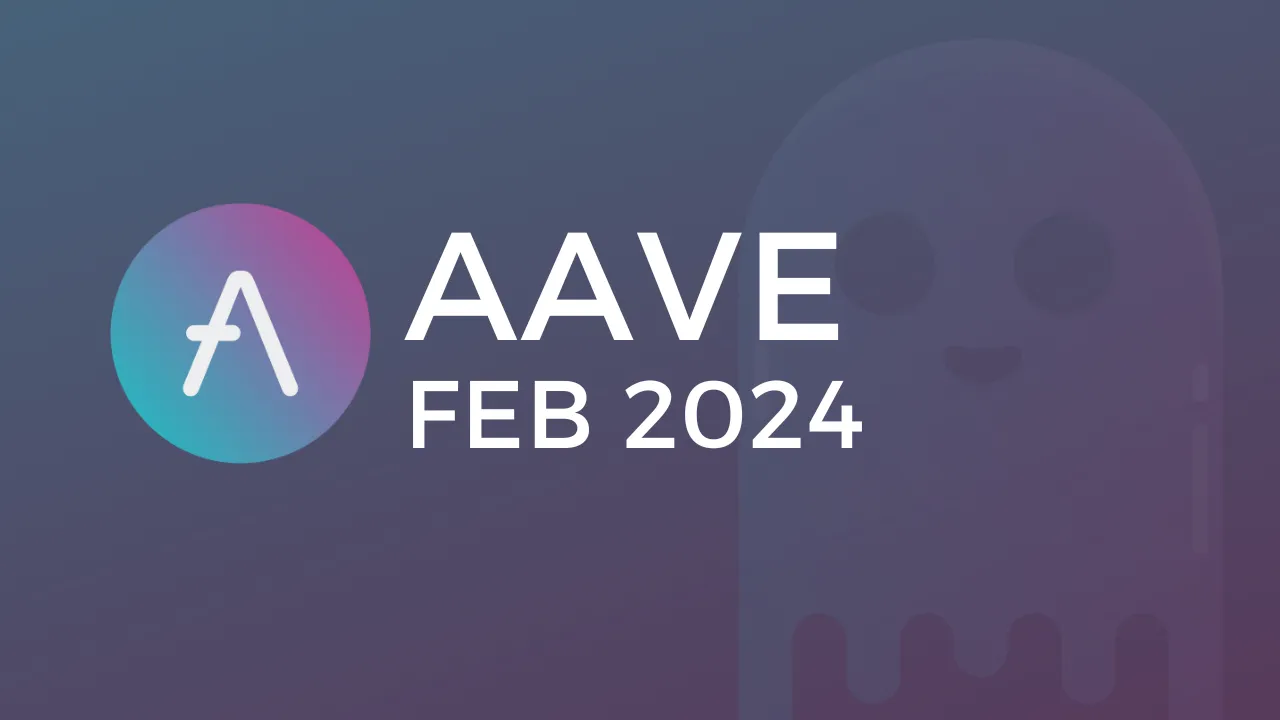
Aave works in simple way at first sight. Users deposit (supply) collateral in some of the tokens that are accepted on the platform and borrow against that collateral, another assets/tokens that are listed.
A classic example would be deposit BTC as collateral, borrow some stablecoin, for example USDT.
The main thing to look out for is the health factor or the supply to borrow ratio and avoid liquidation. By design the protocol has limits and it won’t allow you to borrow more than 70% of the value of the assets you have supplied. But this being crypto you want to be much safer than that and go in the range of 10% to 30% loan to collateral value. This means a 10k collateral for 1k to 3k loan. Managing this ratio is at the end of the day an individual decision, but just have in mind the overall rules.
More to read on Aave on the docs link.
Here we will be looking at:
- Total value locked
- Deposits volume
- Defi protocols rank by TVL
- Number of users DAUs
- Top Pairs
- V2 VS V3 Volume
- Price
The data here is compiled from different sources like DefiLama, Dune Analytics and Messari.
Total Value Locked
Here is the chart for the TVL on AAVE.
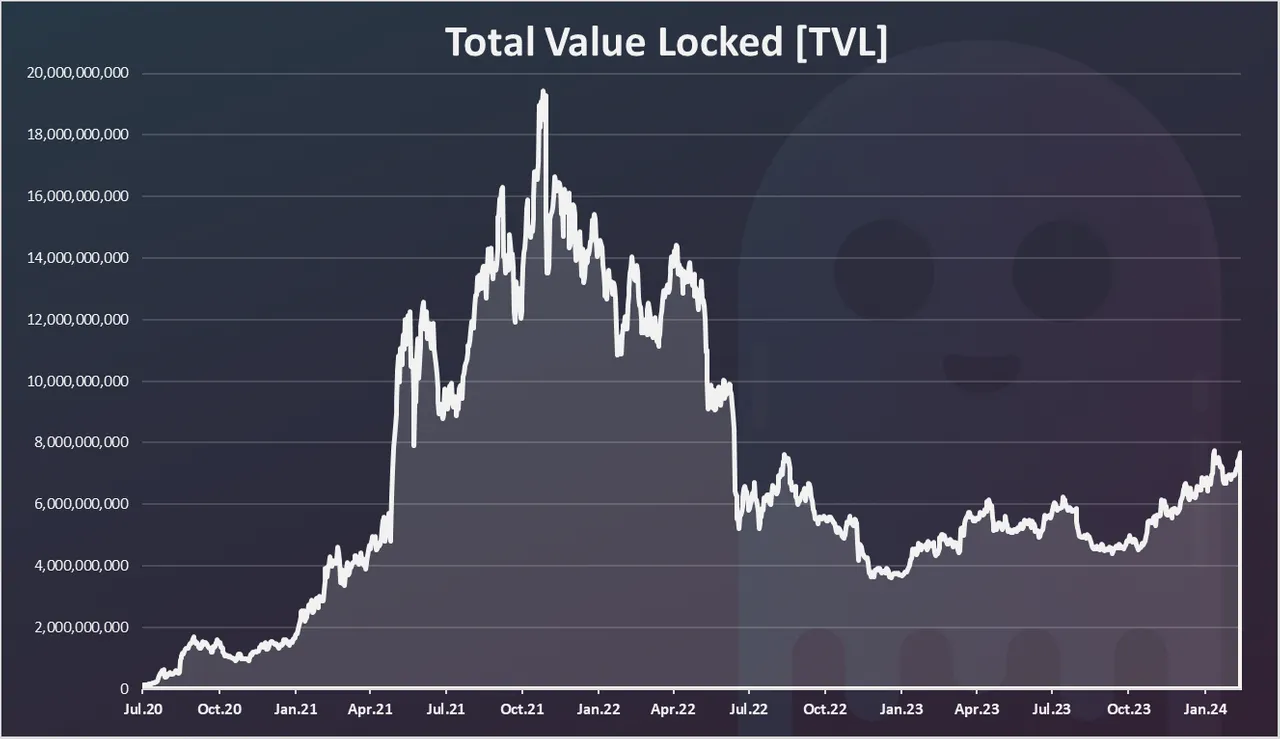
This chart goes back from the protocol beginning back in 2020, through the bull market of 2021 and up to date.
We can notice the sharp increase in the TVL in 2021, reaching almost 20B in the summer of 2021. Then a drop to around 12B and a further drop in 2022 to a record low of 4B. Since then the TVL has been in a range of 4B to 6B for a year and in the last months of 2023 it has further increased and now it is at 8B in TVL.
Deposits Volume
Unlike the swaps and trading platforms, there is no active trading on Aave, but still there are deposits, borrows, liquidations etc. Here we will be looking at the deposits as there is where the most volume is.
The chart looks like this.
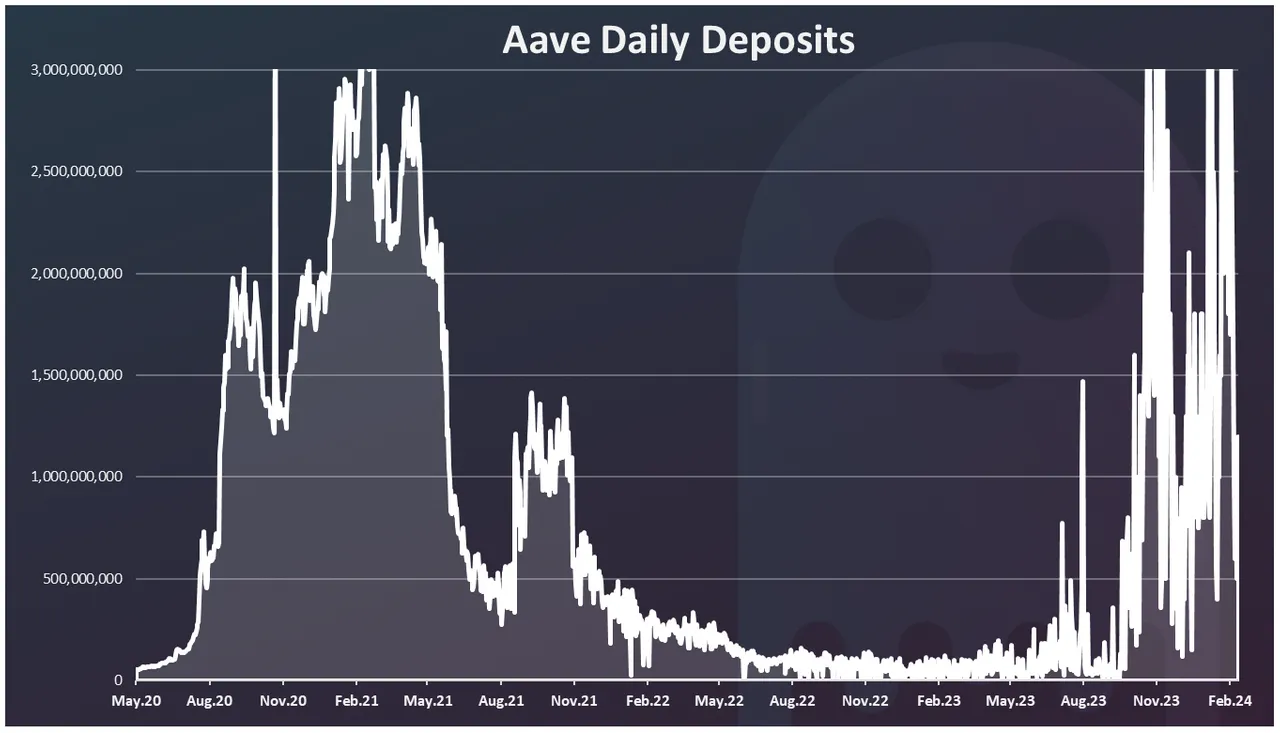
This is even more volatile than the TVL. Interesting there were a lot of deposits starting from 2020, earlier than the bull market in 2021. This is probably due to the fact that Aave was a new protocol then and it was basically starting from zero TVL.
After the initial boom in deposits there was a drop in 2021, then an increase again in August 2021, and later a further drop in the deposits. In the second half of 2022 and the first of 2023 there was a sharp drop in the deposits
Starting from October 2023 the deposit volume started to increase, and it has been quite volatile in the period, going from 100M to 3B on a daily basis.
Top Defi Protocols Ranked by TVL
How is the Aave protocol doing when compared to the other ones? The total value locked is usually one of the metrics these protocols use.
Here is the chart.
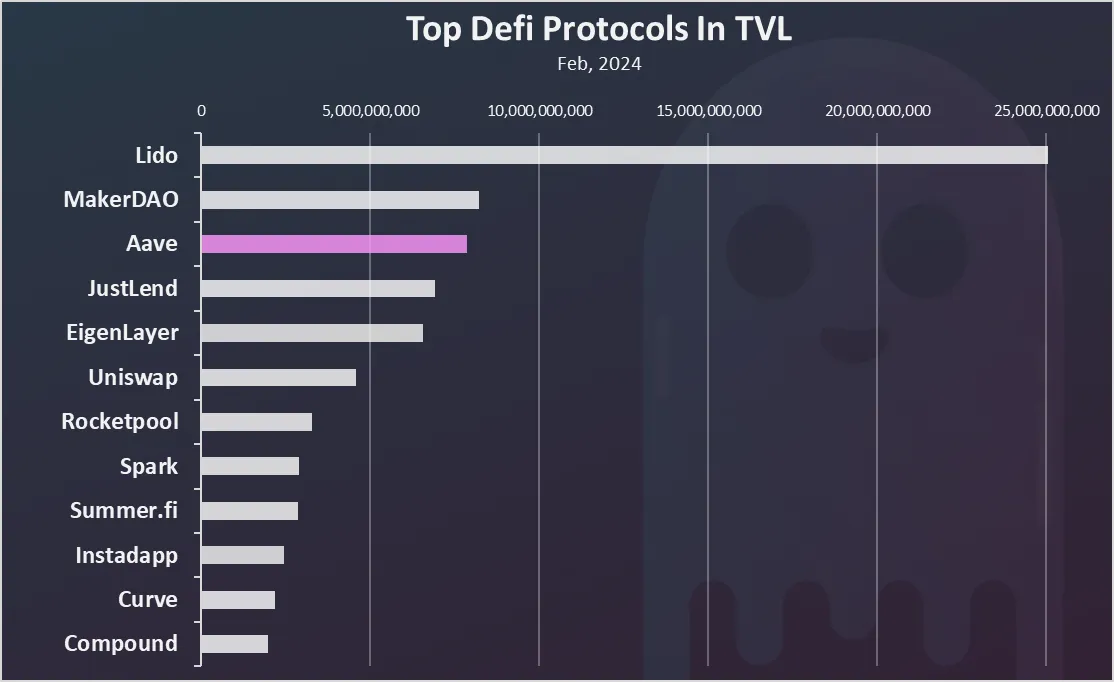
Aave comes as no.3 protocol in terms of TVL!
The Lido protocol, that is the no.1 on the chart with 26B in TVL is a bit specific. It is used for ETH staking, and it has only staked ETH in it. MakerDAO on the second spot is used to generate the DAI stablecoin.
Aave is in close competition with Maker for the second sport.
The JustLend protocol is based on Tron and there are a lot of so to speak native tokens to Tron, that are most likely inflated. So, take the numbers on that one with reserve.
Top Supplied and Borrowed Assets on Aave
What are the assets that have the biggest supply on Aave?
Here is the chart.

Aave has a V2 and V3 versions, and both are represented on the chart above.
As we can see Ethereum is the number one asset that is supplied on Aave, in both of its forms, liquid and staked. This is probably to a no surprise because Aave is native to Ethereum.
The wrapped version of Bitcoin on ETH comes next, followed by the stablecoins USDC, USDT and DAI.
What about the top assets that are borrowed?
Here is the chart.
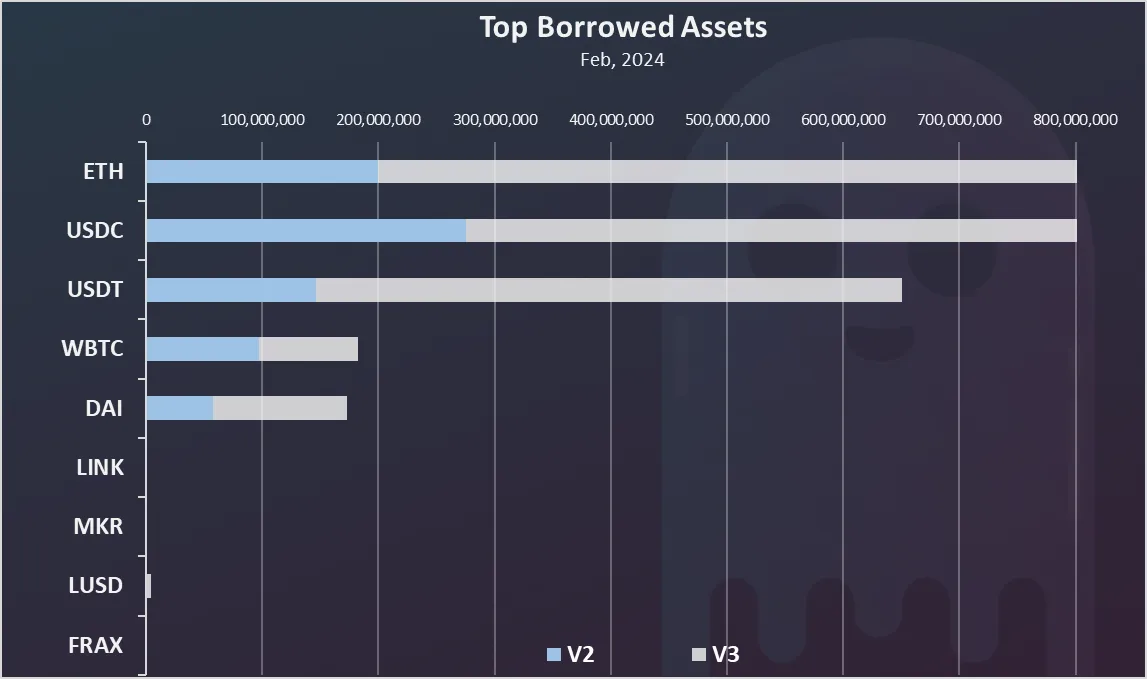
ETH comes on top here as well followed by USDC and the others stablecoins USDT and DAI. Bitcoin is also at the top. The other tokens have a very low usage.
We can notice that in general Bitcoin, Ethereum and the stablecoins are the most used tokens to supply and borrow.
The borrow to supply ratio for the different assets looks like this:
| Pair | Supply | Borrow | B/S |
|---|---|---|---|
| USDC | 943,000,000 | 853,000,000 | 90.46% |
| USDT | 742,000,000 | 651,000,000 | 87.74% |
| DAI | 199,000,000 | 173,000,000 | 86.93% |
| ETH/stETH | 4,294,000,000 | 1,480,000,000 | 34.47% |
| WBTC | 1,700,000,000 | 182,000,000 | 10.71% |
The most borrowed asset in relative terms are the stablecoins. USDC comes on top, followed by USDT, then DAI. Thes three have a Borrow to Supply ratio close to 90%. Meaning most of the provided liquidity is used.
Bitcoin has the lowest amount of borrowed ratio close to 10%.
Version 3 VS Version 2
You might have noticed the V2 and V3 signs in the top supplied and borrowed charts. This is because the protocol as for other products has updates, and when an update launches, the old version is not simply depreciated, but the two coexist, as nobody can destroy the smart contracts.
But in time users usually move liquidity by themselves, as the newer versions have better options and overall data.
The V3 version of Aave was launched at the beginning of 2023. Here how is the market share between V3 VS V2 at the moment.
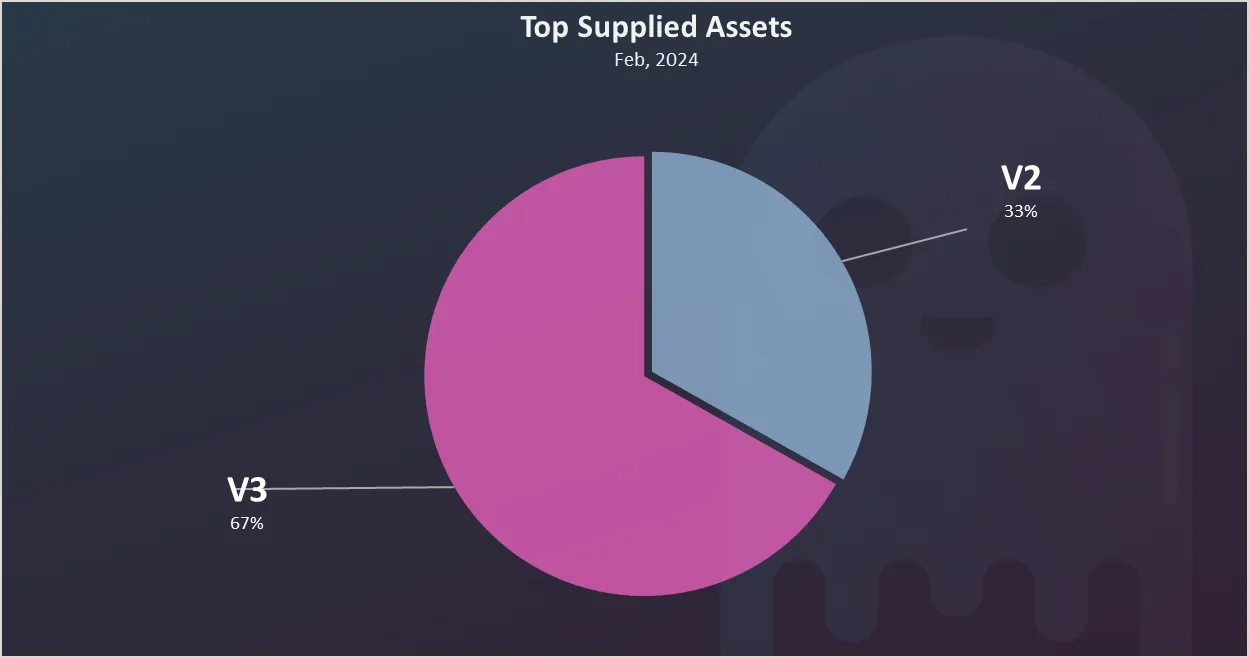
V3 has now become dominant with 67% of the liquidity deposited there. It has grown significantly in the last months. A few months back the share was 50%-50%, and a year back it was just 10%.
Active Users
How many users does Aave has? Here is the chart.
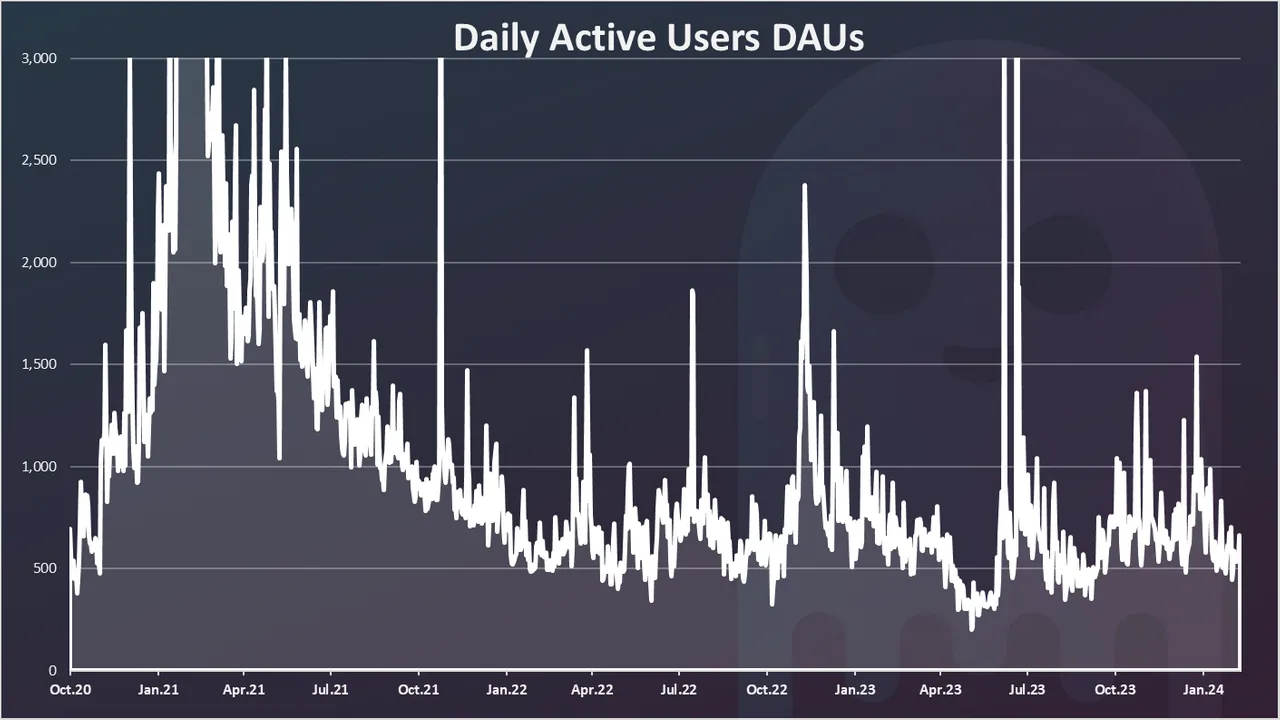
The top for active users on Aave was back in the beginning of 2021, reaching 3k. At the end of 2021 the user count started decreasing and reached 500 users in 2022.
In the last period the number of daily active users has been in the range of 500 to 1000.
This goes to show that most of Aave users play with larger amounts and don’t change their positions on a daily basis. It’s a long-term game when you borrow or lend.
Price
The all-time chart for the AAVE price looks like this.
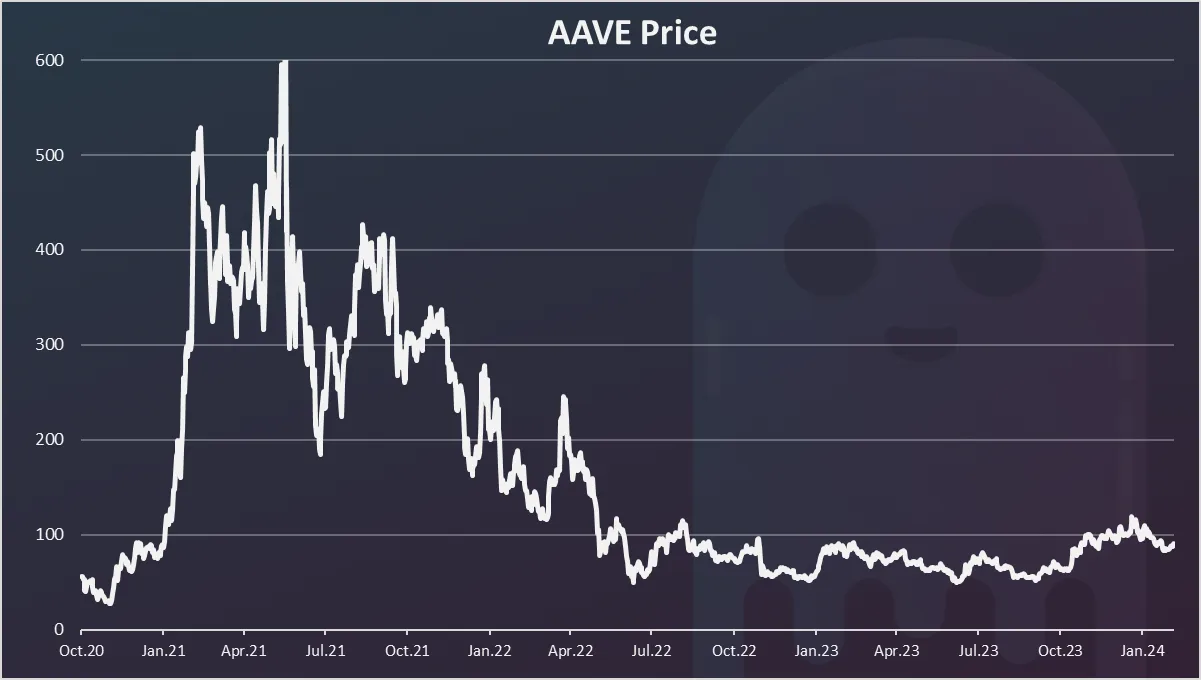
Aave reached its top of $600 back in the summer of 2021. In 2022 the price has dropped to around $50. It has been in the range of 50 to 100 USD since then, with an uptick in the recent months breaking the $100 mark. It has retraced a bit in the last weeks and now it is around $90.
While the price of the token has taken a beating, it still managed to keep its value and the protocol is now ranked in the top 60 on the overall crypto market cap.
All the best
@dalz